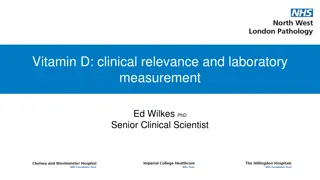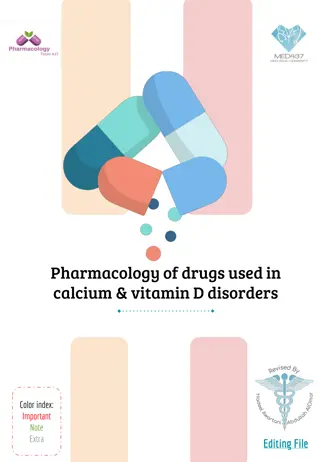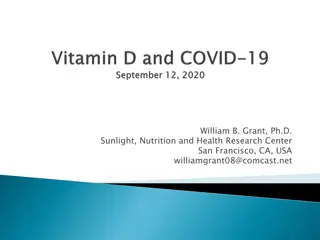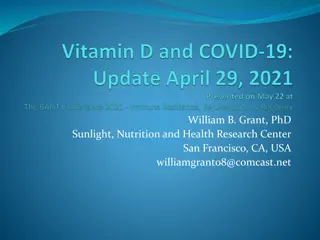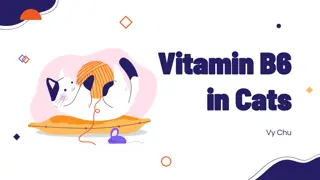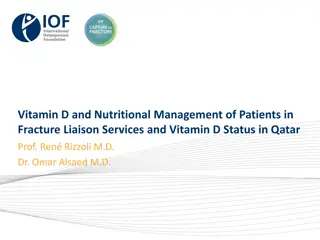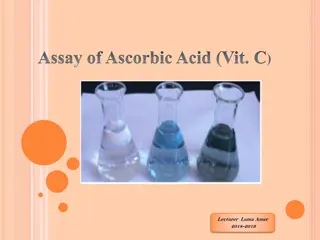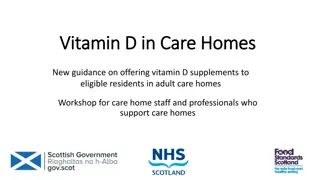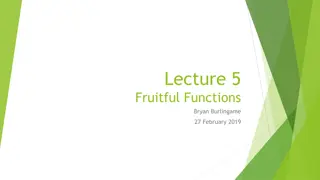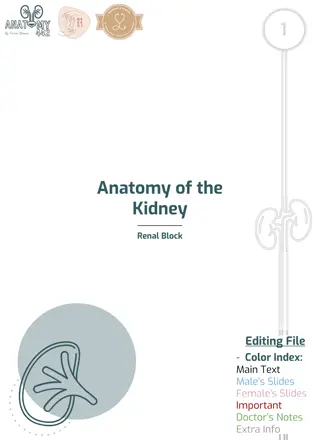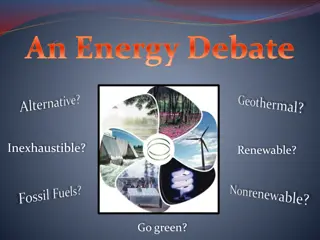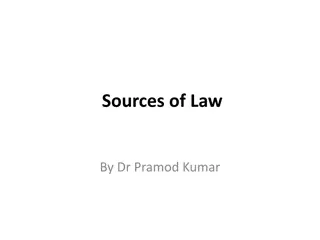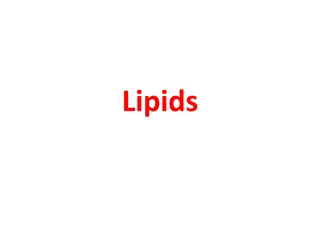Understanding Vitamin K: Types, Sources, and Functions
Explore the types and dietary sources of vitamin K, including Phylloquinone and Menaquinone. Discover the essential role of vitamin K as a coenzyme in the synthesis of prothrombin and blood clotting factors such as II, VII, IX, and X through carboxylation. Learn about the recommended daily allowances for different age groups and genders, along with the importance of maintaining adequate levels of vitamin K for overall health.
Download Presentation

Please find below an Image/Link to download the presentation.
The content on the website is provided AS IS for your information and personal use only. It may not be sold, licensed, or shared on other websites without obtaining consent from the author. Download presentation by click this link. If you encounter any issues during the download, it is possible that the publisher has removed the file from their server.
E N D
Presentation Transcript
HbA NH2 H2O2 Cl2O7 KClO3 NAOH CH2O PO4 KMnO4 M E D I C I N E COOH KING SAUD UNIVERSITY Co2 MgCl2 H2O SO2 Doctors slides Doctors notes Important ExtraInformation HCN CCl4 CuCl2 SiCl4 Biochemistry Vitamin K Don t limit your challenges .. Challenge your limits Editing file Editing file
O B J E C T I V E S By the end of this lecture, the Second Year students will be able to: Identify the types and sources of vitamin K Understand the role of vitamin K in blood coagulation Recognize the importance of g-carboxylation of glutamic acid in coagulation proteins Understand the role of anticoagulant drugs in affecting vitamin K function Discuss the causes and disorders of vitamin K deficiency
Types and sources Dietary sources Occurs in several forms Chemistry Cabbage, kale, spinach, egg yolk, liver Vitamin K1 (Phylloquinone) Vitamin K1(Phylloquinone) Cabbage Kale Spinach Vitamin K2 (Menaquinone) Vitamin K2(Menaquinone) Menadione doesn t have chains like vit. K1 and k2 , hence it s water soluble to be supplementary type . So, when we take it we can add the chain in our bodies . Vitamin K3 (Menadione) synthetic form Vitamin K3(Menadione)
Sources of Vitamin K Sources Phylloquinone Menaquinone Menadione Green leafy vegetables synthetic form . Intestinal bacteria precursor of menaquinone Plant source It plays a role in photosynthesis in plants which differs from its role in animals Intestinal bacterial synthesis meets the daily requirement of vitamin K even without dietary supplement
RDA for Vitamin K (micro g/day) Upper limit is not established because toxicity is rare , although it might happens and it s mentioned at the end of this lecture .. ___________________________ Infant (0- 1 year): 2- 2.5 UL: Not established Children (1-8): 30-55 Note that pregnancy and lactation does not affect the RDA of vitamin K RDA Pregnancy / lactation: 90 / 90 Men (19+): 120 Women (19+): 90
Functions of Vitamin K: Coenzyme for the synthesis of prothrombin and blood When clotting factors which are proteins are synthesized in the liver they are not active yet .. They have to be activated by carboxylation and the carboxylation step needs vit K as a co-factor to complete it clotting factors in the liver Prothrombin and clotting factors are protein in nature Synthesis of prothrombin, clotting factors II, VII, IX, X require carboxylation of their glutamic acid (Glu) residue Mature prothrombin and clotting factors contain - The carboxylation happens at glutamic acid residues since its one of the amino acids the already have carboxylic acid side chain .. So the other COO- is added during the interaction that is mediated by carboxylase enzyme and that is required for activation of clotting factors carboxyglutamate (Gla) after carboxylation reaction Vitamin K is essential for the carboxylase enzyme involved Dihydroquinone form of vitamin K is essential for this reaction
Glutamic residue Glutamic residue 1 1 3 3 Vit K work as a co-factor for carboxylase converts no.1 into no.3 6: If Vit K is in it s epoxide form and can t get back to it s dihydroquinone form(4) that leads to decrease clotting factors and increase prothrombin time 2 2 Adds carboxylic acid group Adds carboxylic acid group 4 4 6 6 Active form Of Vit K Of Vit K Quinone form epoxide is not active so even vit K needs to get activated by being reduced again into dihydroquinone active form with the help of the enzyme reductase 5 5 K Block the Block the activation of Vit K activation of Vit K Carboxylase enzyme is also called epoxidase since it turn vit k to epoxide form Warfarin -competitive inhibitors of reductase - .
Analogs of Vitamin K Here vit K can t get back to it s Dihydroquinone form and that leads to decrease clotting factors and increase prothrombin time So they work at the reduction step .. ___________________________ Actually the reduction of epoxide form occurs by two steps but we only mentioned the one that can be inhibited by warfarin dicumarol .. Hence if warfarin overdose is administered that will block only one pathway so if we want to reverse the action we need to give high doses of vit K to let the other pathway work and complete the cycle .. Anticoagulant drugs: warfarin and dicoumarol Structural analogs of vitamin K They inhibit the activation of vitamin K to hydorquinone form (inhibiting the reductase enzyme) Prothrombin and clotting factors are not carboxylated Hence blood coagulation time increases upon injury (Increasing the coagulation time)
Glutamate Carboxylation of glutamate requires vitamin K The process is inhibited by warfarin This diagram shows that he process of converting glutamic acid residue into gamma-carboxy-glutamate needs oxygen, carbon dioxide and vit k while it get inhibited by warfarin as mentioned before
Functions of vitamin K Prothrombin platelet interaction Prothrombin platelet interaction Carboxylated prothrombin contains two carboxylate groups (COO ) These groups bind to Ca2+ forming prothrombin-calcium complex The complex then binds to phosholipids ( ) .. (Making a bridge) on the surface of ) ( platelets (important for blood clotting) Converting prothrombin to thrombin and initiating clot formation Prothrombin > Thrombin > Clot formation
Functions of vitamin K Synthesis of -carboxyglutamate in osteocalcin Osteocalcin is a bone turnover protein Also called Bone Gla Protein (BGP) Osteocalcin is another protein that needs similar way of carboxylation and it s the major non-collagenous protein incorporated in bone matrix during bone formation Involved in bone formation, mineralization and resorption -Carboxyglutamate is required for osteocalcin binding to hydroxyapatite (a Exact function is unknown but people who have less amounts of carboxylated osteocalcin are more prone to develop bone fractures calcium mineral) in the bone The binding mechanism is similar to that of prothrombin-platelet binding
Deficiency of Vitamin K Prolonged antibiotic therapy Deficiencies are rare: it is synthesized by intestinal bacteria Especially in marginally malnourished individuals (eg debilitated geriatric patients) Some second-generation cephalosporin drugs cause this condition due to warfarin-like effects (antibiotics given with vit. K) Hypoprothrombinemia: increased blood coagulation time Lipid malabsorption can lead to vitamin K deficiency May affect bone growth and mineralization Because absorption of dietary vitamin K from your small intestine depends on normal fat digestion
Deficiency of Vitamin K Both of the above destroy the bacterial flora leading to vitamin K deficiency New borns are more susceptible to develop deficiencies because their intestine are sterile with no vit k producing bacteria Some times that is regulated by giving intramuscular vit k injections Gastrointestinal infections with diarrhea Deficiency most common in newborn infants 1. Newborns lack intestinal flora 2. Human milk can provide only 1/5th vitamin K 3. Supplements are given intramuscularly at birth
Deficiency manifestation and toxicity Manifestations Toxicity Hemorrhagic disease of the newborn Prolonged supplementation of large doses of menadione can cause: It is occasionally used as a nutritional supplement because of its vitamin K activity.) Bruising tendency, ecchymotic patches (bleeding underneath the skin) Purple patches under the skin Mucus membrane hemorrhage 1. Hemolytic anemia Post-traumatic bleeding / internal bleeding 2. Due to toxic effects on RBC membrane Jaundice Prolonged prothrombin time And also their bones get fractured easier than normal people osteocalcin
Take home messages Vitamin K is essential for blood coagulation process It mediates the process by -carboxylation of glutamic acid residues of prothrombin and coagulation factors
Summary: Deficiencies? of? Vitamin? K: Lipid? malabsorption 2ndGen? cephalosporins Malnourished? ind. using? antibiotics GI? Infections? with?diarrhea Common? in? antibiotics Types?of? Vitamin? K K1? (Phylloquinone) K2? (Menaquinone) K3? ? ? (Menadione) Clinical? manifestations: Hemorrhagic? disease? of? the? newborn Bruising? tendency,?ecchymotic? patches RDA: Infant? >? Children?>? Women?>? Pregnant? Women?>? Men Mucus? membrane? hemorrhage Post-traumatic? bleeding? /? internal? bleeding Prolonged? prothrombin?time? Functions?of? Vitamin? K Toxicity: Prolonged?large? intake? of? menadione?for? a? long? time? >? toxic? effects? on? the? RBC? membrane? which? leads? to? Hemolytic? anemia? - Jaundice Coenzyme? for? the?synthesis?of? proteins? in? the? liver:? Prothrombin?and? Blood? clotting? factors Carboxylated? Prothrombin? +? Ca2+? >? phospholipids?on?surface? of? platelets: Synthesis?of? (Gla)? ? ? ? ? ? ? ? ? ? -carboxyglutamate? for? osteocalcin? to? bind? with? hydroxyapatite. by? carboxylationof? (Glu)? into? (Gla)? which? needs?dihydroquinone? form? of? Vit? K Important? for? clotting Warfarin inhibits? reductase(no? dihydroquinone?formation)
QUIZ Q1: What factors of Vit K are pro-coagulants ? A. I , II & X B. II , VII, IX, & X C. IX , V & X D. None of the above Q4 : The form of vitamin K that is required for activation of clotting factors is ? A. Menaquinone B. Menadione C. Phylloquinone D. Hydroquinone Q2 : Which ONE of the following is synthetic form of Vit k ? A. Menaquinone B. Menadione C. Phylloquinone D. Dihydroquinone Q5 : Vitamin K is synthesized in the body by ? A. Kidney B. Liver C. Spleen D. Intestinal bacteria Q3 :All factors and proteins in blood clotting are synthesized in ? A. Pancreas B. Kidney C. Liver D. Spleen Q6 : What group of people need additional Vitamin K ? A. Premature newborns B. People with bile production abnormalities C. Patients with urinary tract infections D. Both A and B
QUIZ Q7 : Mention the dietary sources of Vitamin K ? Q10 : A patient came with liver cirrhosis and they noticed an increase in prothrombin time. As a prognosis do you suspect the patient to have Vitamin K deficiency and why ? Cabbage, kale, spinach, egg yolk, liver Q8 : Mention two conditions in which an individual is more prone to be Vitamin K deficient ? No, in liver diseases there is an increased prothrombin time due to deficient synthesis of coagulation factors. Further, vitamin K fails to restore Prothrombin time when administered. Newborns, prolonged use of antibiotics Q9 : Describe briefly the biological action of Vitamin K ? Carboxylation of non-mature clotting factors into mature, functional ones. Suggestions and recommendations Suggestions and recommendations 1) B 2) B 3) C 4) D 5) D 6) D
T E A M M E M B E R S TEAM LEADERS Saleh altwaijri Mohammad Almutlaq Rania Alessa Maha alghamdi Haneen alsubki Rana Barsain
THANK YOU FOR CHECKING OUR WORK Lippincott's Illusrated Reviews Biochemistry 6th E Review the notes PLEASE CONTACT US IF YOU HAVE ANY ISSUE @436Biochemteam Biochemistryteam436@gmail.com


